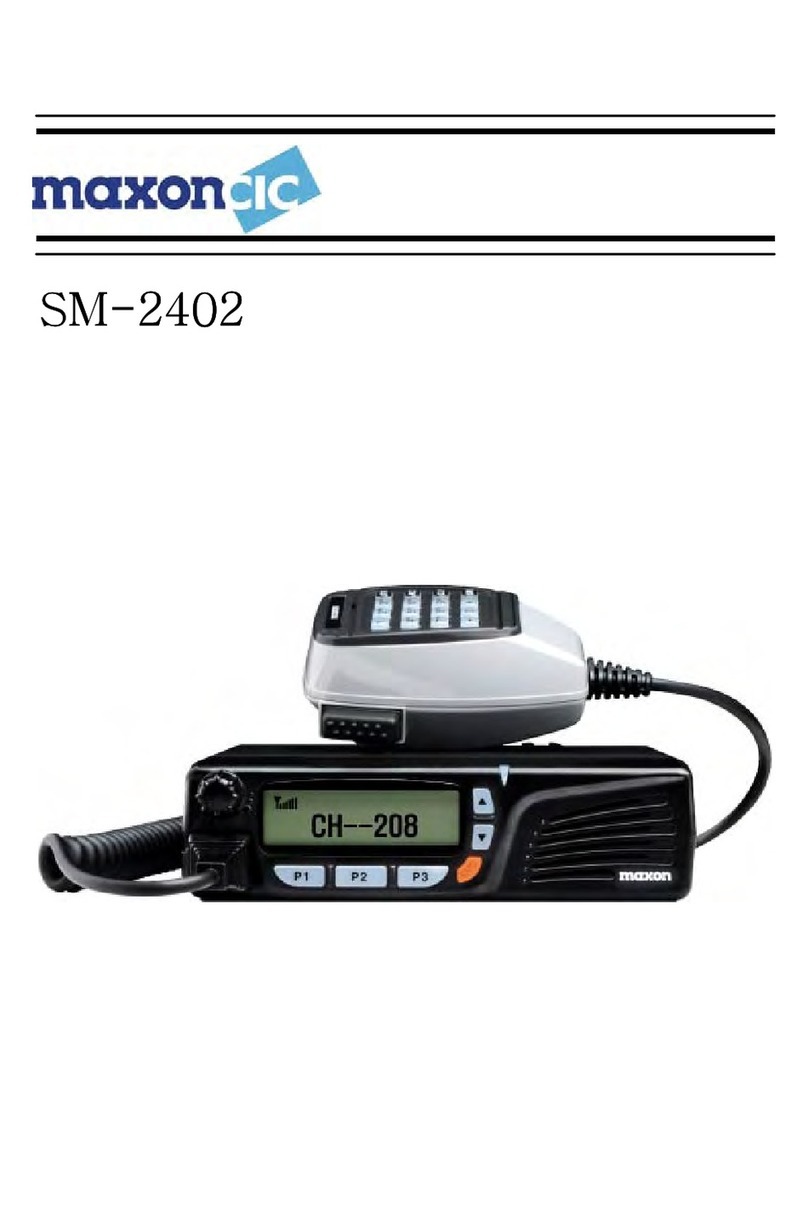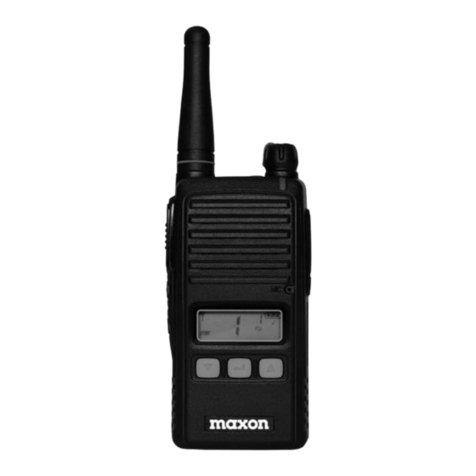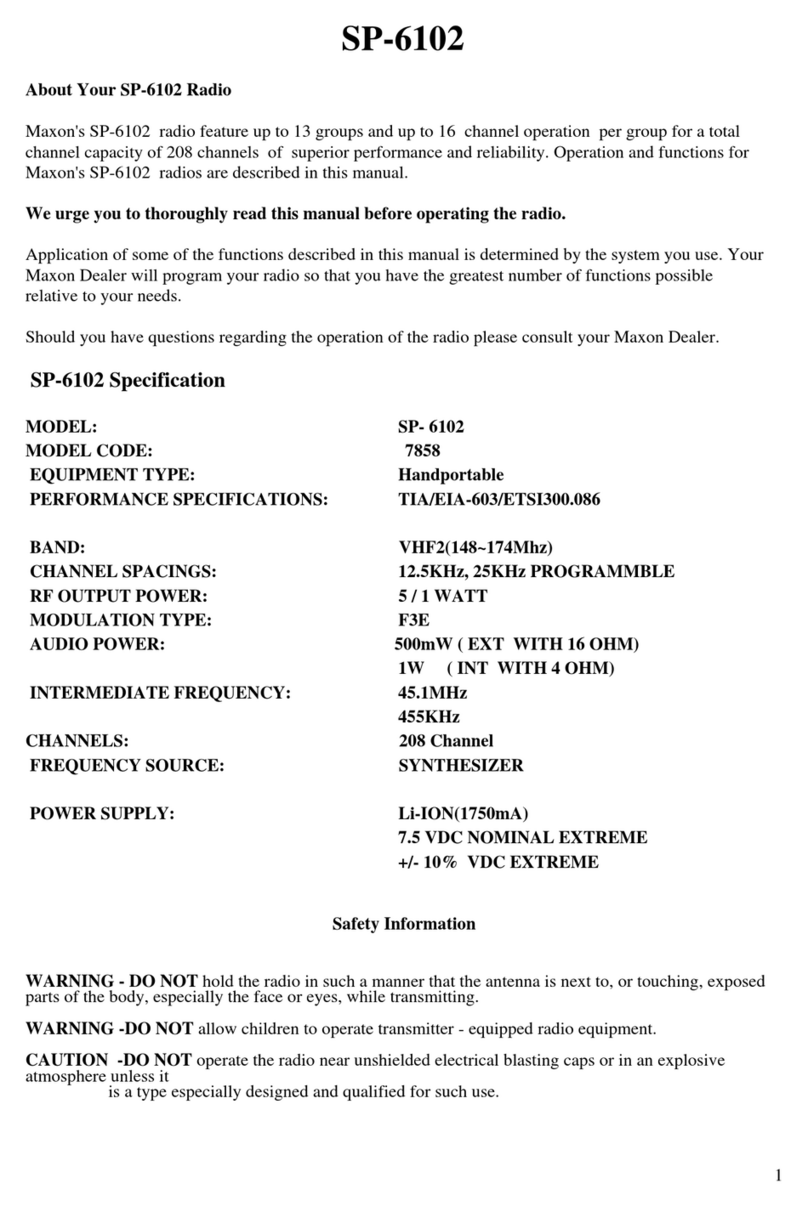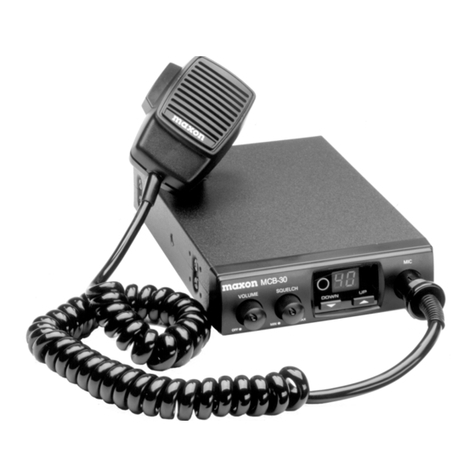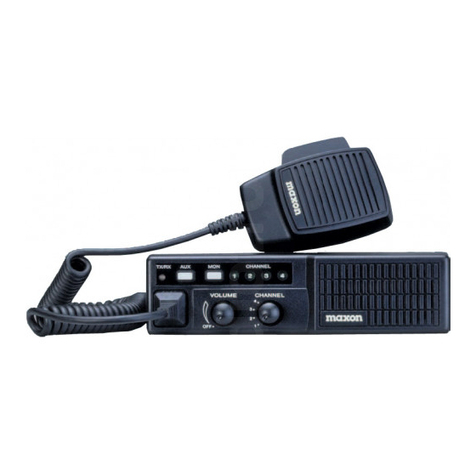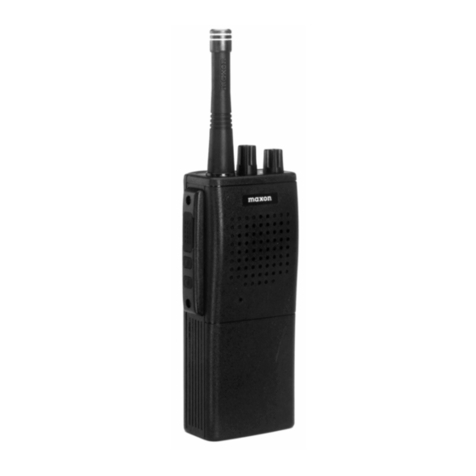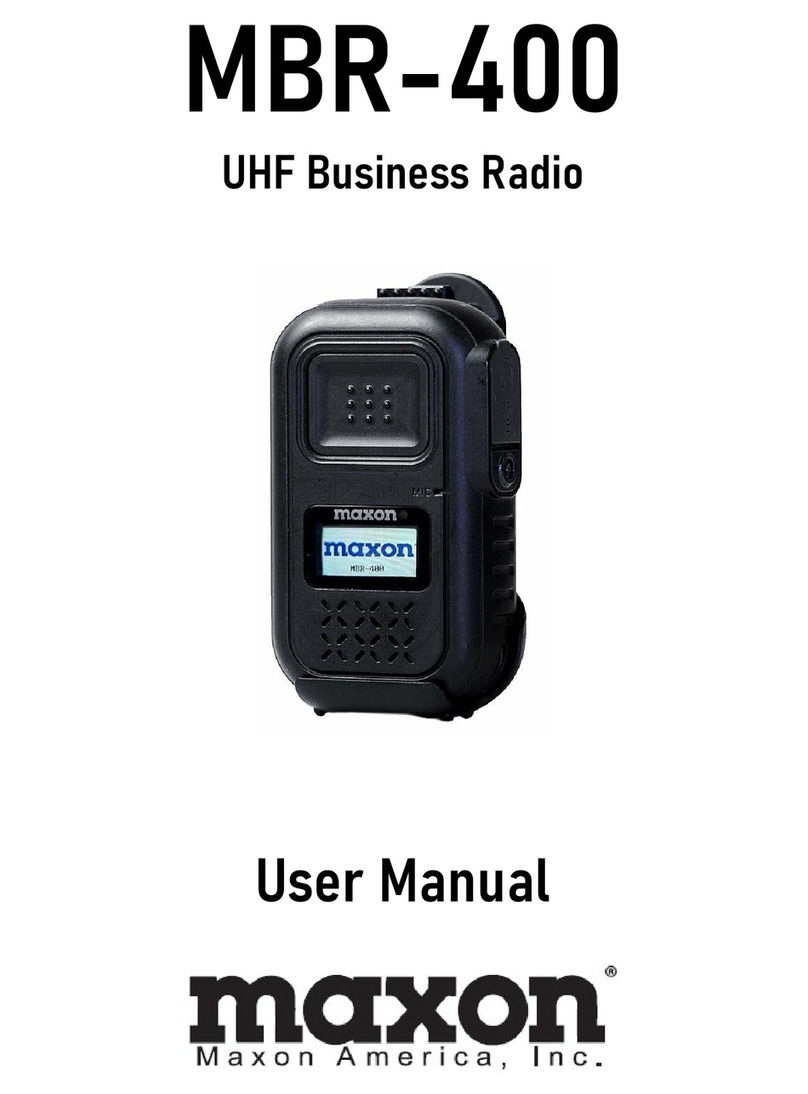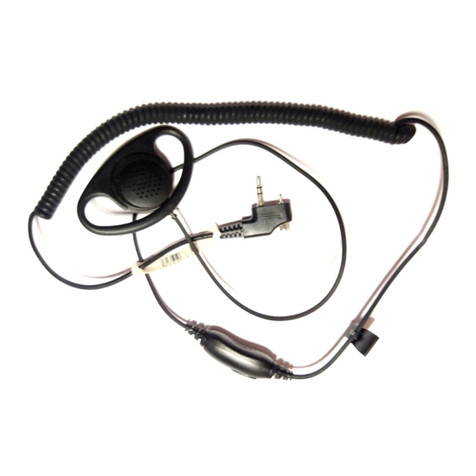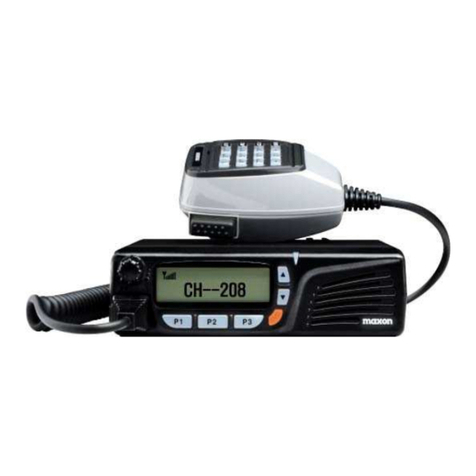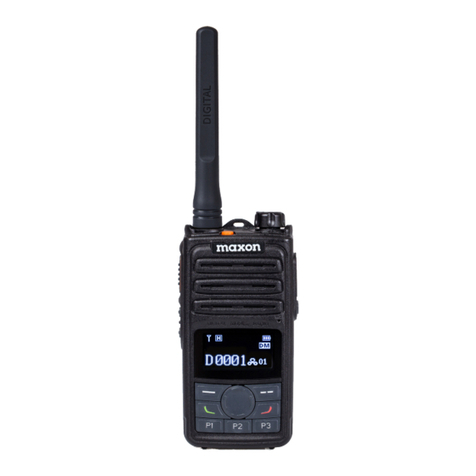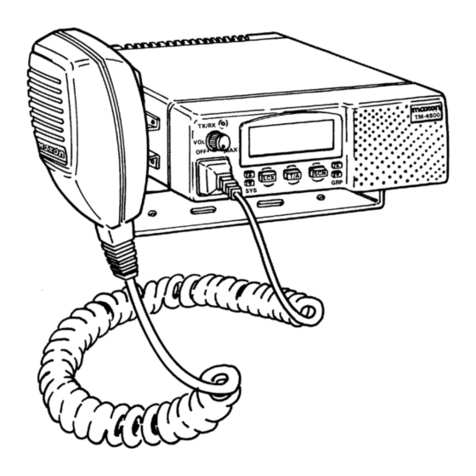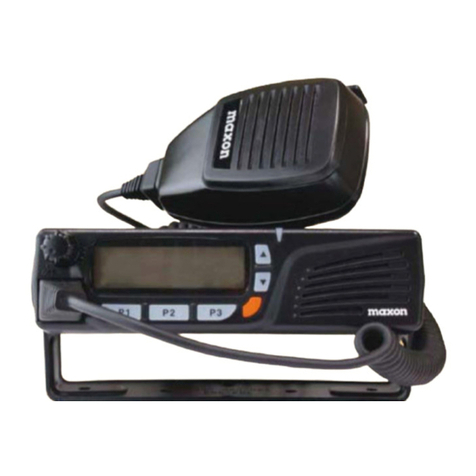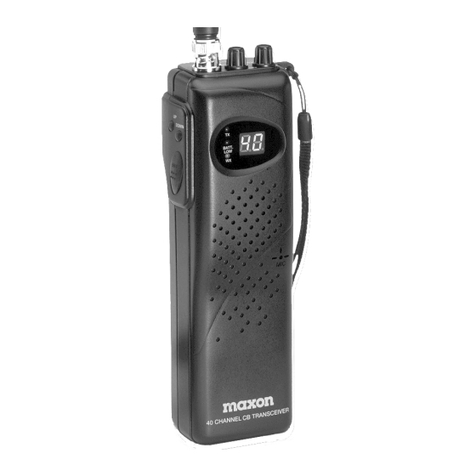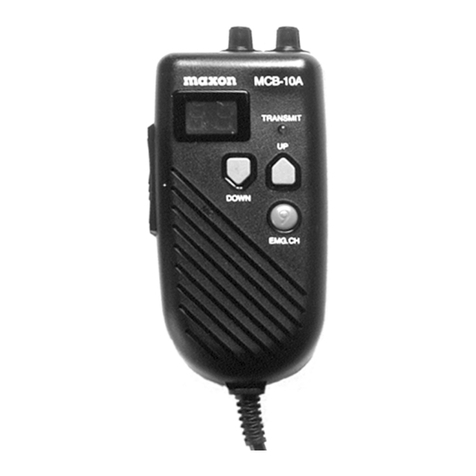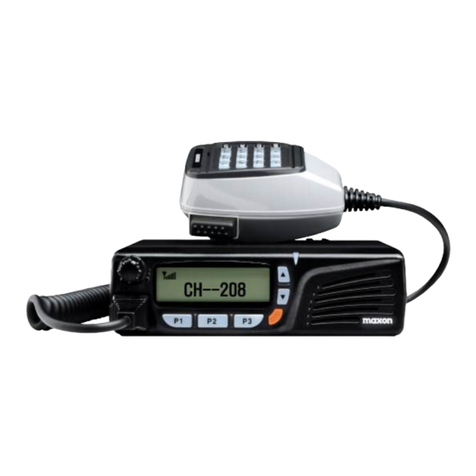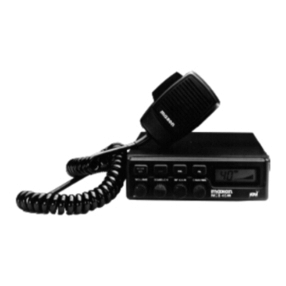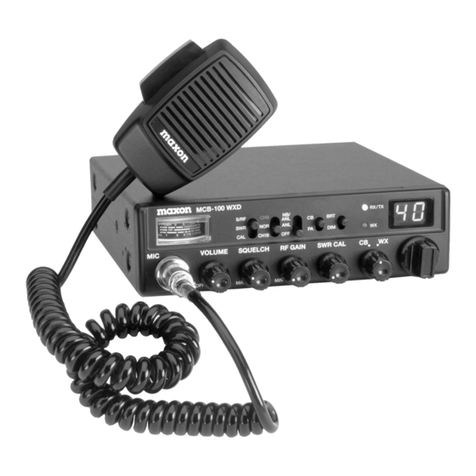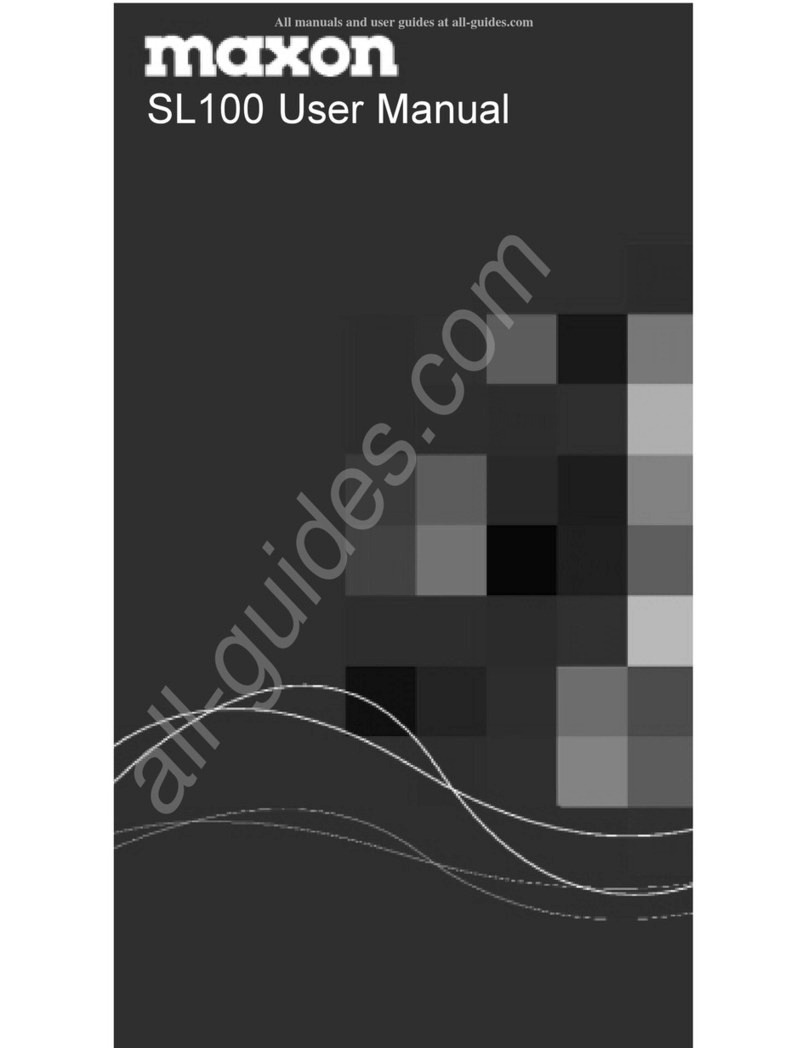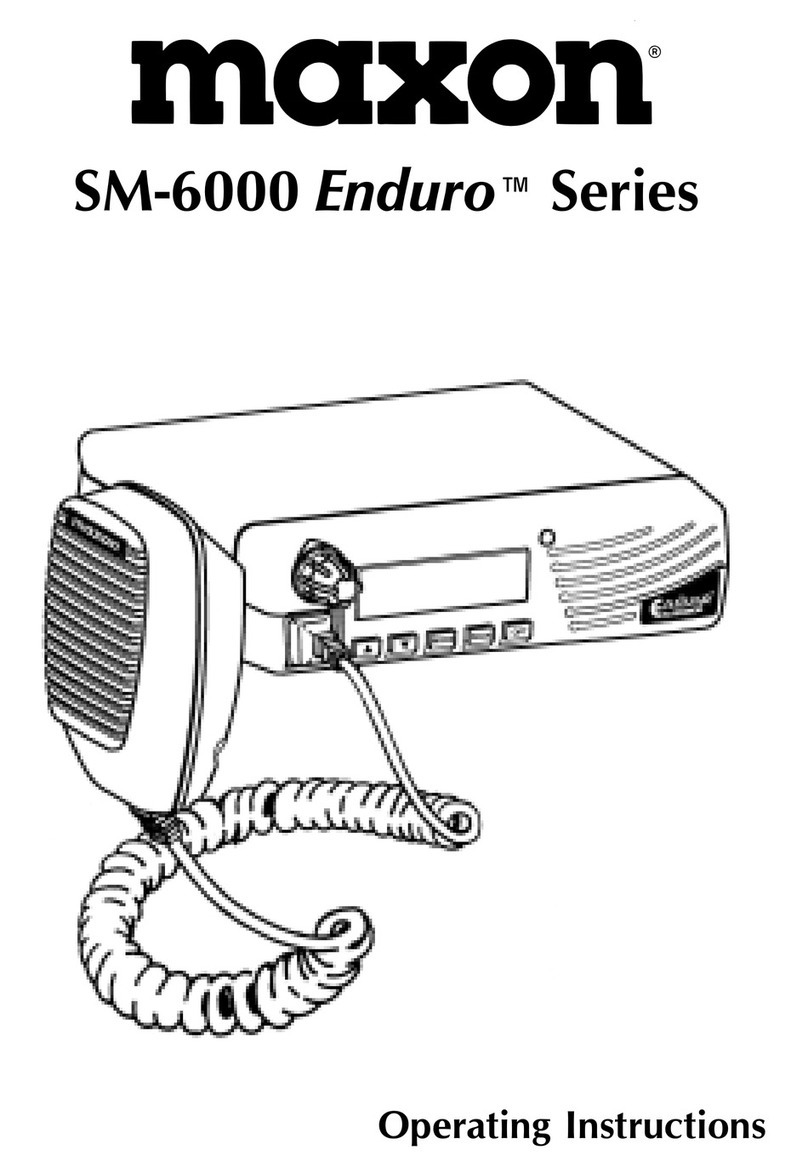NOTICE!
Repairs to this equipment should be made only by an authorized
service technician or at a facility designated by the supplier. Any
repairs, alterations or substitutions of recommended parts made by
the user to this equipment not approved by the manufacturer could
void the user's authority to operate the equipment in addition to
the manufacturers warranty.
NOTICE!
The software contained in this device is copyrighted. Unpublished
rights are reserved under the copyright laws of the United States.
FCC LICENSING
This unit may or may not require a specific FCC license to operate.
The FCC requires that all transmitters in the conventional and some
trunked systems to be licensed by the Federal Communications
Commission. Some trunked operations now are exempt from indi-
vidual licensing requirements but may be operated in a licensed
system.
Consult your Maxon Dealer regarding specific licensing infor-
mation (Form 571), or contact the Federal Communications
Commission via phone: 888-CALLFCC (1-888-225-5322) or
through an FCC District office near you.
These operating instructions are published by Maxon America, Inc.,
without any warranty. Improvements and changes necessitated by typo-
graphical errors, inaccuracies of current information, or improvements to
programs and/or equipment may be made by Maxon America Inc. at any
time and without notice. Such changes will be incorporated into revisions
or new editions of this manual. No part of this manual may be reproduced
or transmitted in any form or by any means, electronic or mechanical,
(including photocopying and recording) for any purpose without the
sexpress written permission of Maxon America, Inc.
Copyright September 1997 - Maxon America, Inc.
